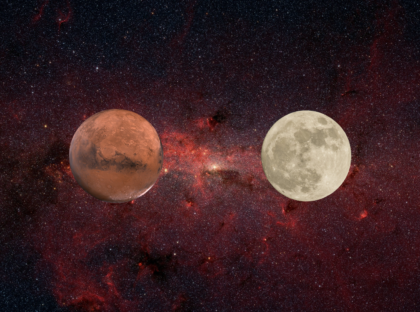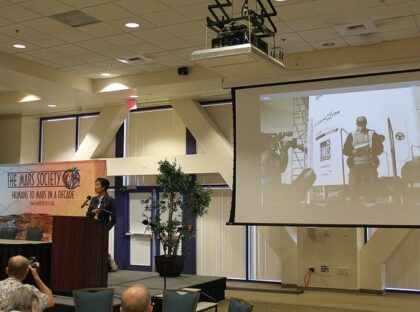
By Evan Plant-Weir, Red Planet Bound Blog 02.24.21
Humanity has some unfinished business with the Moon.
The lunar surface has fallen back into the realm of the remote and unfamiliar for too long. The Apollo landings kindled a dream of an expansive, space-faring future for our species, and that vision continues to inspire us nearly a half century later.
Though we have sustained an ember of that dream through crewed missions to the International Space Station, it diminishes a little with every passing year that we do not once more step foot on another world. NASA’s upcoming plan to establish a sustainable human presence on the Moon via the Artemis program, therefore, constitutes a long-overdue reunion.
Every human on Earth has access to a night sky that is punctuated by the presence of our Moon. On a clear evening, it is visible from both dense urban environments and secluded rural landscapes. Whether we own a telescope, or have only our eyes to stargaze, it is there for us all to consider with wonder.
When we can look up at that jewel of the commons and know that it is within the reach of human experience once again, countless lives will be enriched.
There is, however, a significant inherent risk in returning to the Moon. I’m not referring to the physical hazards faced by the astronauts who will make that voyage, but rather the risk to our future security and development as a species, should that endeavor cost us our chance at Mars.
For the sake of the long-term survival and growth of life from Earth, the overarching goal of space exploration must be the pursuit of a multi-planetary future. By far the best candidate for this endeavor is Mars. The window to the red planet is open now, but given the unfortunate volatility of human history it could close at any time. The choice to insert the Moon as an intermediate step is therefore a substantial gamble.
The true efficacy of a lunar foothold, then, will be determined by whether it constitutes a commitment to that more pressing objective, or a distraction from it.
But why is Mars so essential to a multi-planetary future? The Moon is just a few days’ travel away – doesn’t that make it a more suitable choice for exploration and settlement?
A world of difference
The Moon has no appreciable atmosphere. Besides a thin layer of rarefied gas, it is engulfed by the vacuum of space. This means that the lunar surface has no protection whatsoever from radiation or meteoroid bombardment.
The lunar surface is covered with a layer of jagged particles generated by micrometeorite impacts. With no wind to erode this asbestos-like dust, it remains sharp, like tiny broken pieces of glass. In fact, it is so abrasive that it stripped away layers of the Apollo astronauts’ boots.
In sunlight, temperatures reach 260 degrees Fahrenheit (127 degrees Celsius) and, in the shade, they drop to -280 degrees F (-173 C). These temperature extremes are highly localized since there is no atmosphere to equalize the difference. Lunar equipment and infrastructure will therefore have to resist both freezing and overheating depending on whether they are in sunlight or shadow.
Artemis astronauts will experience 17% of Earth’s gravity on the Moon. The long-term effect of partial gravity on the human body is unclear, but we do know that the weightlessness felt by humans on the International Space Station results in tangible changes to their physiology, such as bone loss or muscular degeneration. It’s safe to assume that similar health consequences might result from long-term lunar habitation.
Furthermore, a day on the Moon is 29 times longer than a day on Earth. This drastic departure from our natural day-night cycle will introduce an additional challenge for our biological systems which are finely tuned to the daylight hours of our home world. The long lunar nights will also hinder the usefulness of solar power.
None of these challenges are insurmountable. We can, and should, carve out a sustainable human presence on our closest celestial neighbor (eventually), but the Moon is a dismal candidate for our next home.
Fortunately, our solar system contains a far better match for our technological and biological systems. It’s a bit of a fixer-upper, and it takes a few months to get there, but the red planet’s presence within our reach is nothing short of spectacular luck.
To read the full blog article, please click here.


